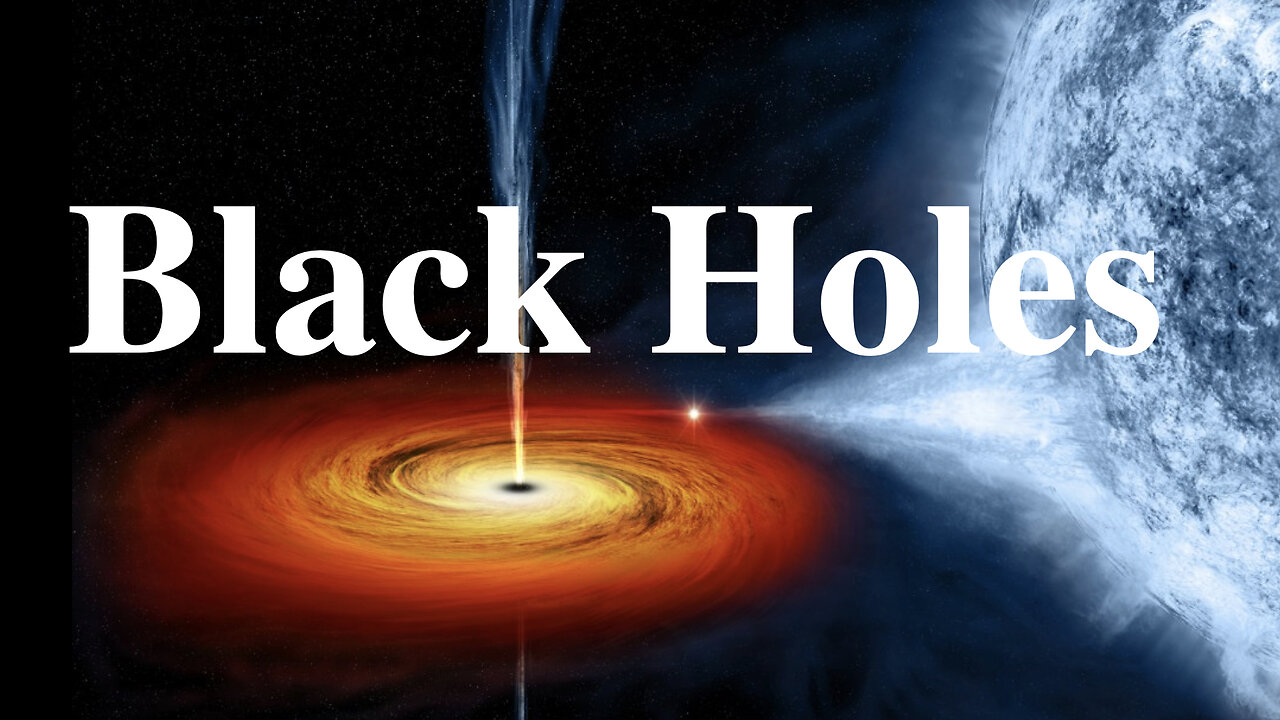Premium Only Content

Explore the Mysterious World of Black Holes: Nature’s Most Enigmatic Cosmic Phenomena!
The exploration of black holes represents one of the most profound challenges in contemporary astrophysics, engaging scholars and enthusiasts alike in the intricate dance of gravity and spacetime. Black holes, defined as regions of spacetime exhibiting gravitational acceleration so strong that nothing, not even light, can escape from them, are the product of the complex interplay between mass and the fabric of the universe. This discussion will elucidate the foundational principles surrounding black holes, tracing their theoretical inception through the contributions of key scientific figures, culminating in our current understanding of these enigmatic entities.
The conceptualization of black holes can be traced back to the late 18th century, when John Mitchell, an English scientist and clergyman, first proposed the notion of ‘dark stars’ in 1783. Building upon Newton’s corpuscular theory of light, Mitchell posited that if light comprises particles, then it must possess sufficient energy to escape a gravitational field. He asserted that should an object possess a mass and density similar to that of the sun but expanded to 500 times its current size, the escape velocity would exceed the speed of light, thereby preventing any emitted light from escaping its gravitational pull. This revolutionary idea laid the groundwork for the mathematical exploration of gravitational singularities.
The theoretical underpinnings of black holes were further advanced by Pierre-Simon Laplace, who, in 1796, established mathematical proofs indicating the existence of stars with gravitational fields strong enough to trap light. However, it was not until the advent of general relativity, articulated by Albert Einstein in 1915, that the modern understanding of black holes began to take shape. Karl Schwarzschild provided the first solution to Einstein’s field equations, yielding the Schwarzschild solution, which describes the spacetime surrounding a spherically symmetric, non-rotating mass. This solution demonstrated that the curvature of spacetime is directly related to the mass and energy contained within it, thereby establishing a mathematical framework for understanding gravitational phenomena.
The discourse surrounding black holes evolved significantly in the 20th century, particularly following the work of J. Robert Oppenheimer and his student Hartland Snyder in 1939. They elucidated the fate of massive stars that exhaust nuclear fusion, positing that once the neutron degeneracy pressure is overcome, such stars would collapse into a singularity, creating a black hole. This marked a pivotal moment in astrophysics, transitioning from theoretical speculation to the recognition of black holes as actual astronomical entities.
To further comprehend black holes, it is essential to delineate their various forms, primarily stellar and supermassive black holes. Stellar black holes, typically formed from the remnants of massive stars post-supernova, possess masses ranging from three to several tens of solar masses. In contrast, supermassive black holes, which reside at the centers of galaxies, can reach millions to billions of solar masses, with our Milky Way hosting one approximately four million times the mass of the sun.
The singularity at the core of a black hole is accompanied by an event horizon, a boundary beyond which information cannot escape to the outside universe. The event horizon is not a physical surface but rather a mathematical construct, indicating the point at which the escape velocity equals the speed of light. Within this boundary, the laws of physics as we understand them cease to apply, leading to phenomena such as gravitational time dilation and redshift.
As an object approaches a black hole, it experiences extreme tidal forces, often described by the term ‘spaghettification.’ This process results in the elongation and compression of matter due to differential gravitational forces, ultimately leading to its disintegration before crossing the event horizon. Observational evidence for black holes primarily arises from their gravitational influence on nearby stars and gas clouds, as well as the detection of X-ray emissions from accretion disks formed by matter spiraling into the black hole.
The study of black holes has been enriched by advancements in observational technology, allowing astronomers to detect and analyze the effects of these cosmic phenomena indirectly. Instruments such as the Event Horizon Telescope have enabled the first visual evidence of a black hole’s shadow, specifically in the galaxy M87, providing a remarkable affirmation of theoretical predictions. Additionally, the detection of gravitational waves from colliding black holes has opened a new avenue for understanding their properties and the dynamics of their interactions.
In conclusion, black holes epitomize the confluence of theoretical physics and observational astronomy, offering profound insights into the nature of gravity, spacetime, and the fundamental structure of the universe. As research continues to evolve, our comprehension of these astronomical enigmas will undoubtedly deepen, inviting further inquiry into the cosmic mechanisms that govern our existence.
-
 10:05:38
10:05:38
Dr Disrespect
12 hours ago🔴LIVE - DR DISRESPECT - BLACK OPS 7 - GIVE ME BACK MY NUKE
121K14 -
 LIVE
LIVE
Drew Hernandez
2 hours agoTARGETED LEFTIST TERRORIST ATTACK IN CHICAGO & ISRAEL GEOFENCING U.S. MEGA CHURCHES
981 watching -
 8:58
8:58
Degenerate Jay
12 hours agoXbox Game Pass Is Getting Ridiculous
2.19K -
 7:03
7:03
GBGunsRumble
1 day agoGBGuns Range Report 05OCT25
1.43K2 -
 1:32:30
1:32:30
Glenn Greenwald
9 hours agoWill the War in Gaza Finally End? Flotilla Activists Predictably Abused in Israel's Dungeons; Van Jones' Revealing Joke about "Dead Gazan Babies" | SYSTEM UPDATE #527
84.6K66 -
 LIVE
LIVE
SpartakusLIVE
5 hours ago#1 King of Content brings MOTIVATION to the MASSES on Monday
529 watching -
 1:48:32
1:48:32
megimu32
3 hours agoON THE SUBJECT: 2000s Hits That Vanished! 🎶
4.55K3 -
 12:19
12:19
China Uncensored
11 hours agoWas This Death China's Turning Point?
9.05K33 -
 2:51:40
2:51:40
This is the Ray Gaming
3 hours ago $0.09 earnedThe MonRAYest MonRay | Rumble Premium Creator
4.7K -
 7:39:50
7:39:50
GritsGG
8 hours agoWarzone Win Grinding! Most Wins in WORLD! 3680+!
3.13K1
